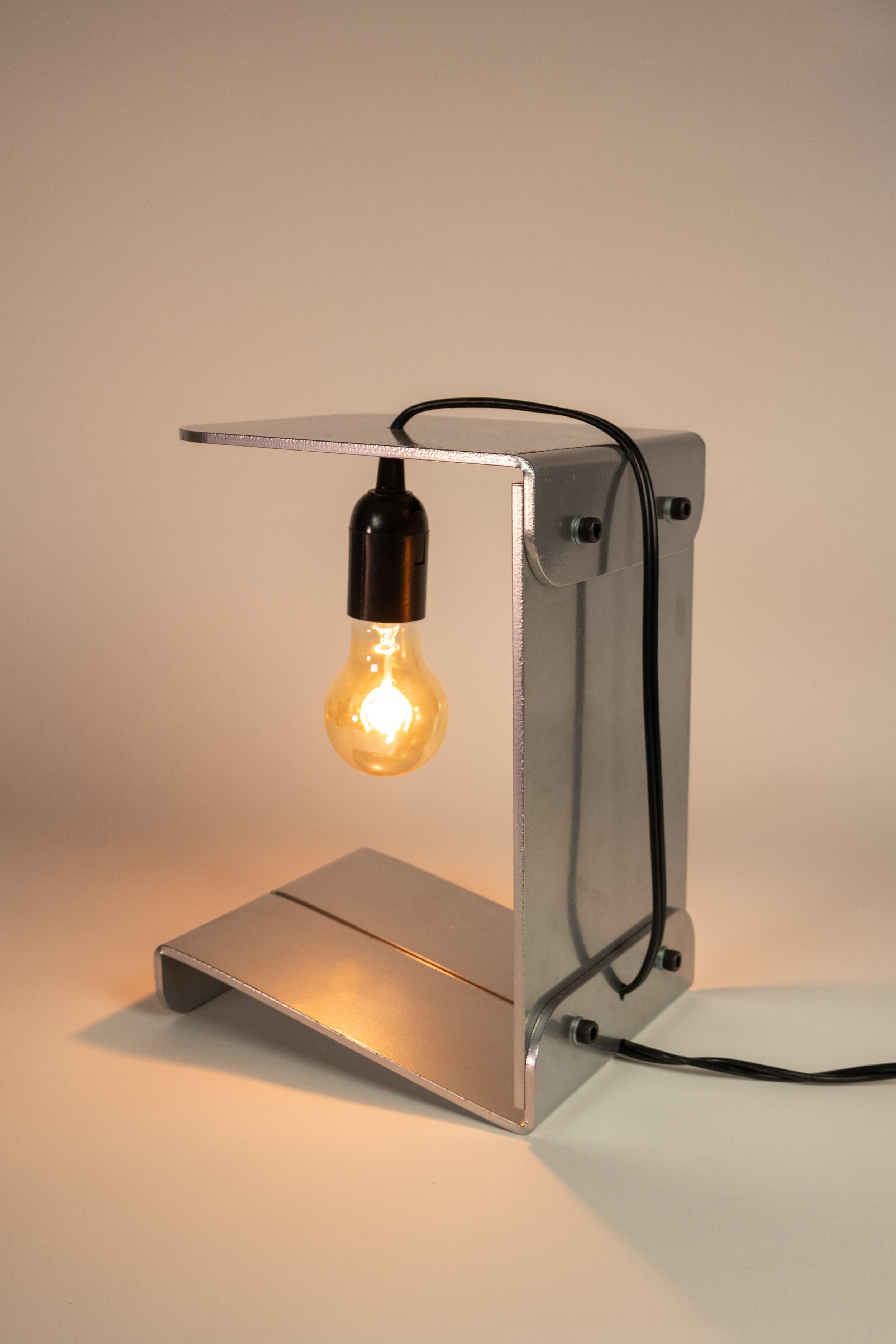Axis
Axis is a CNC-milled aluminum lamp that explores the intersection of precision and warmth. Its clean, folded form is shaped around the logic of the X, Y, and Z axes — a nod to the digital fabrication process that brings it to life. The exposed bulb contrasts the cool rigidity of the material, creating a balanced composition where structure and softness meet.
project overview.
Axis is a CNC-fabricated lighting design that explores the intersection of structure, materiality, and sensory experience. Inspired by industrial processes and automotive surface language, the design is composed of three CNC-milled aluminum sheets, bent and assembled to form a clean, angular “C” profile. Rather than aiming for seamlessness, the visible separation between components introduces spatial rhythm and visual tension. The lamp embraces contrast between sharp edges and soft light, precision, and warmth. An exposed bulb sits deliberately within the frame, creating a moment of rawness that breaks from traditional lighting aesthetics. Through this juxtaposition, Axis draws attention to light, reflection, and texture, encouraging the viewer to engage with its tactile and sensory qualities. Designed with both fabrication logic and emotional resonance in mind, Axis is a study of how small, intentional details can shape experience.
Role
Designer
Project Date
April 2025
Client
Class Project
Skills Involved
CNC Milling
Metal Fabrication
CAD Modelling
design process.
The design process for Axis began with research into CNC milling and fabrication techniques, focusing on how precise toolpaths and machine logic could shape both form and experience. This research informed a series of exploratory sketches that investigated structure, layering, and the expressive potential of flat sheet material. From sketching, I transitioned into 3D modeling to refine proportions, tolerances, and the spatial relationship between components. Once the form was finalized, I moved into fabrication using both laser cutting and CNC milling to create each aluminum sheet with precision. The parts were then bent into their final geometry, aligning with the design’s structural and visual intent.
Early Ideation
Process
Final Deliverables














